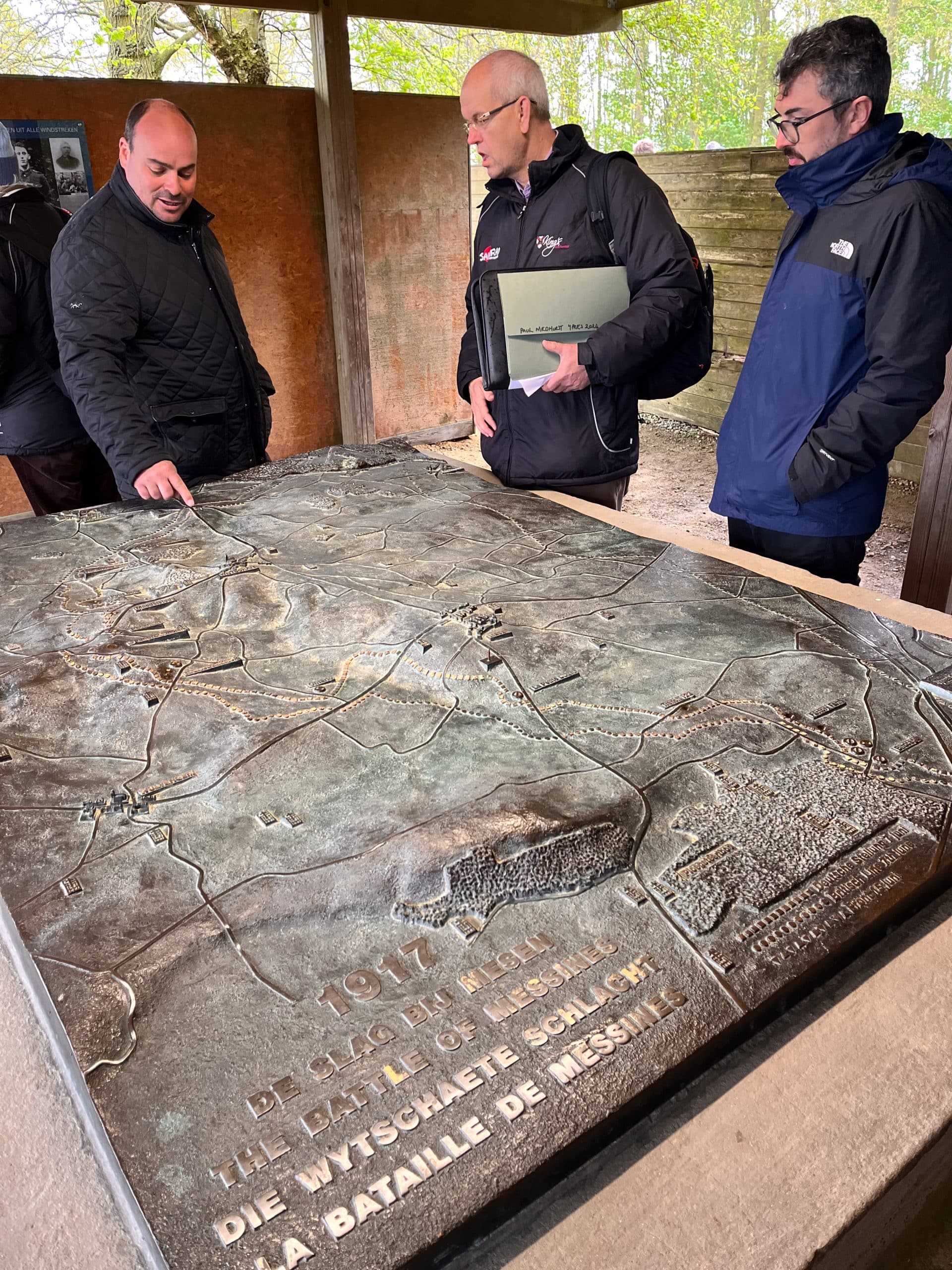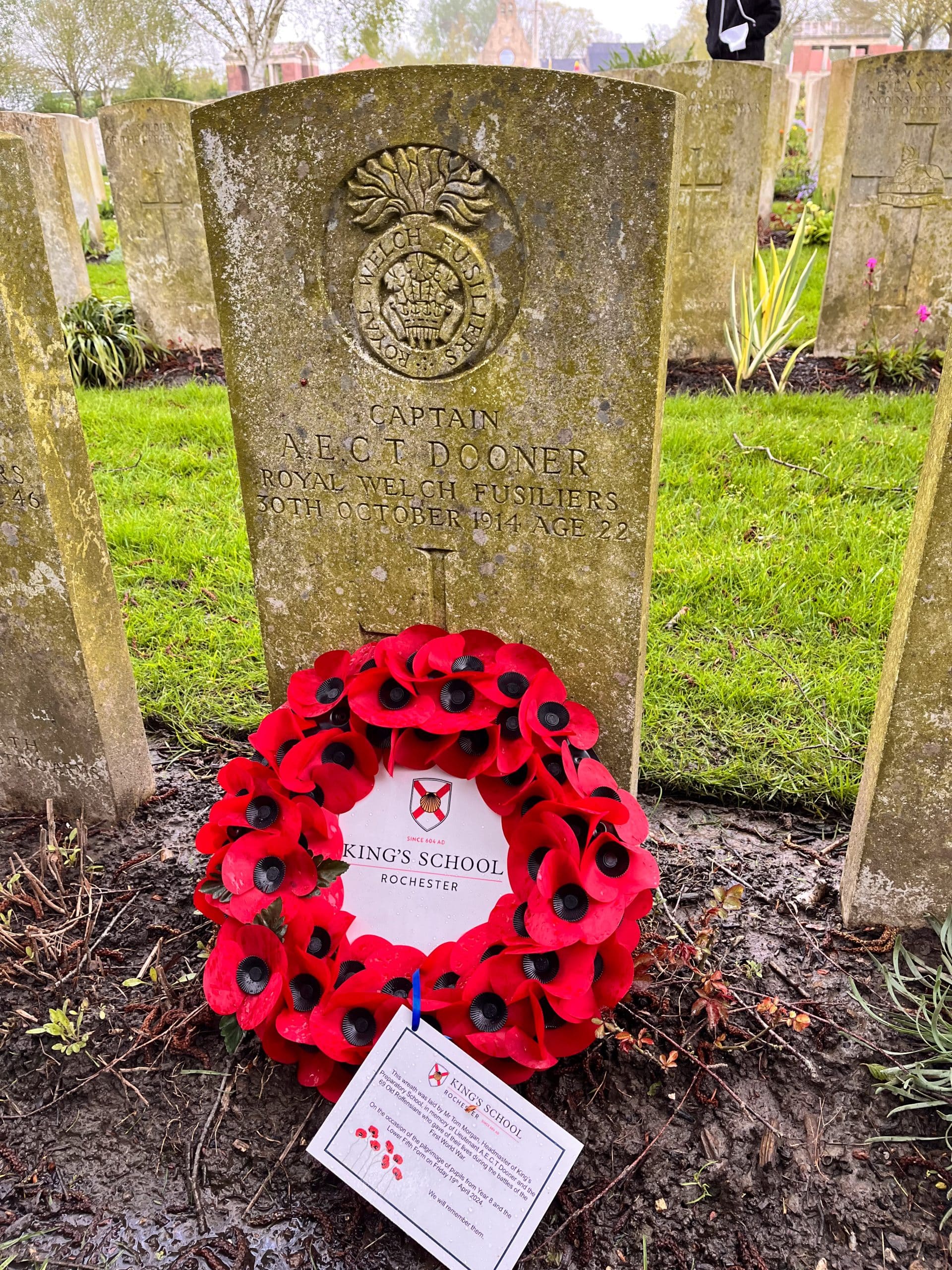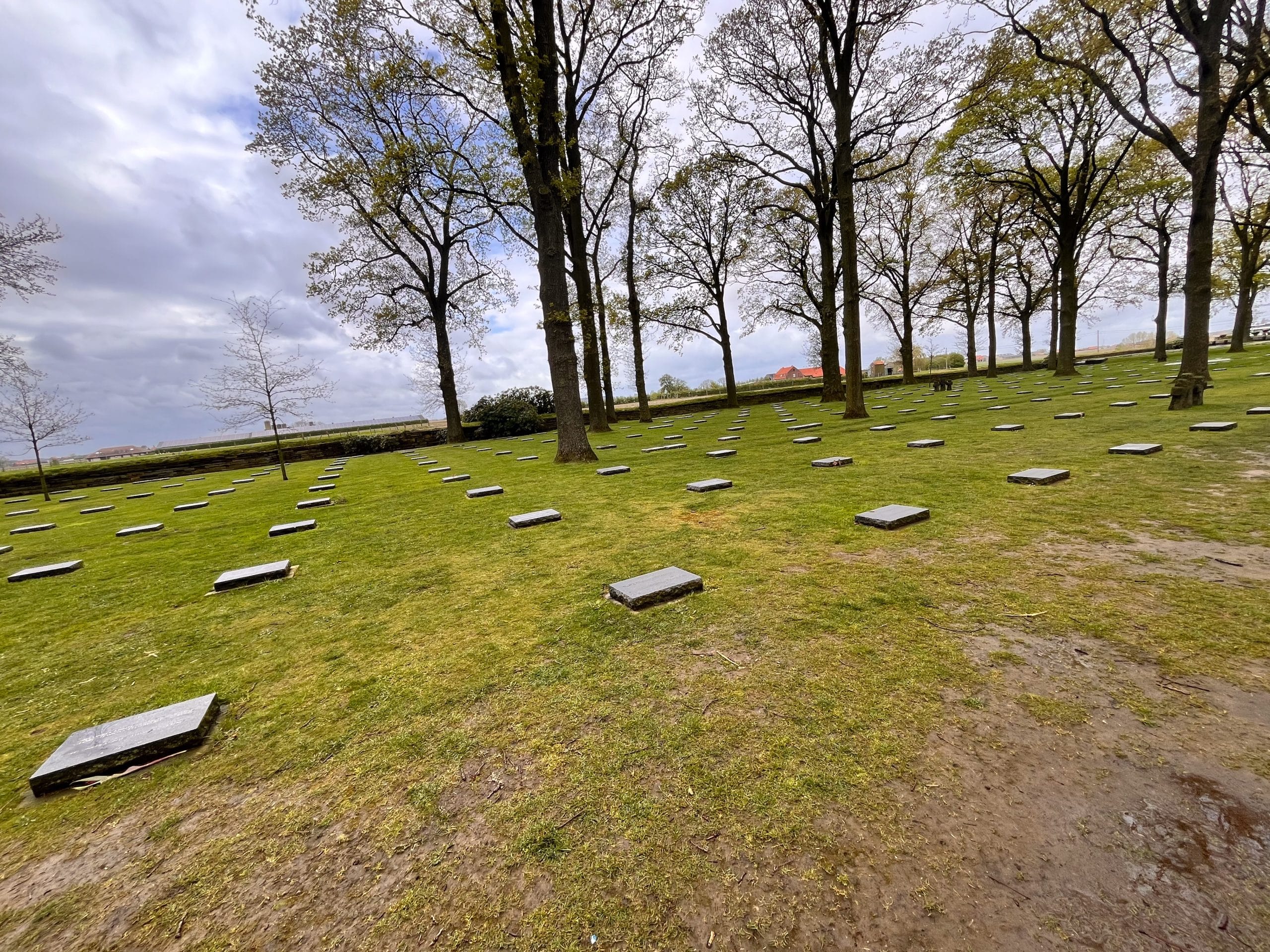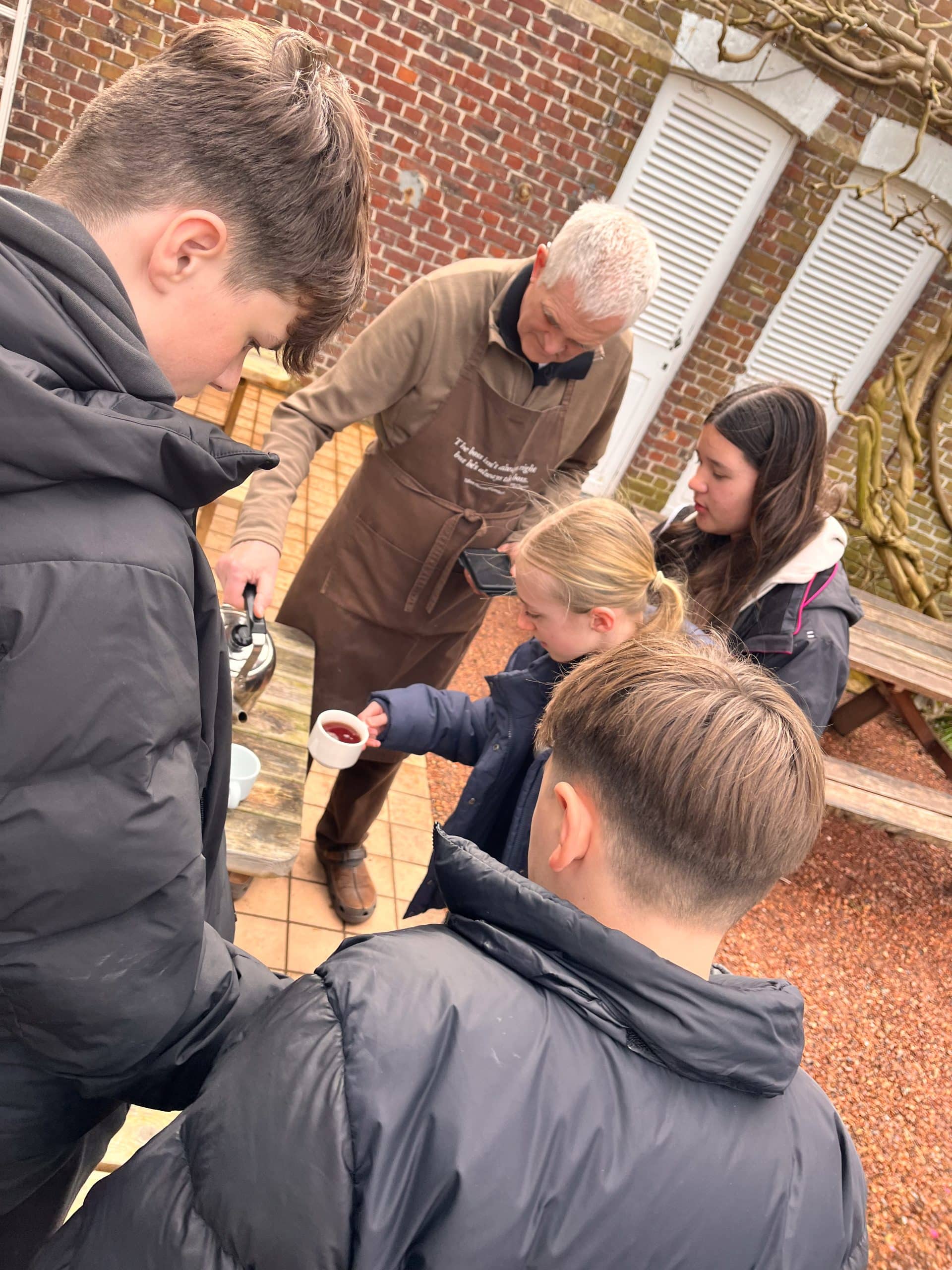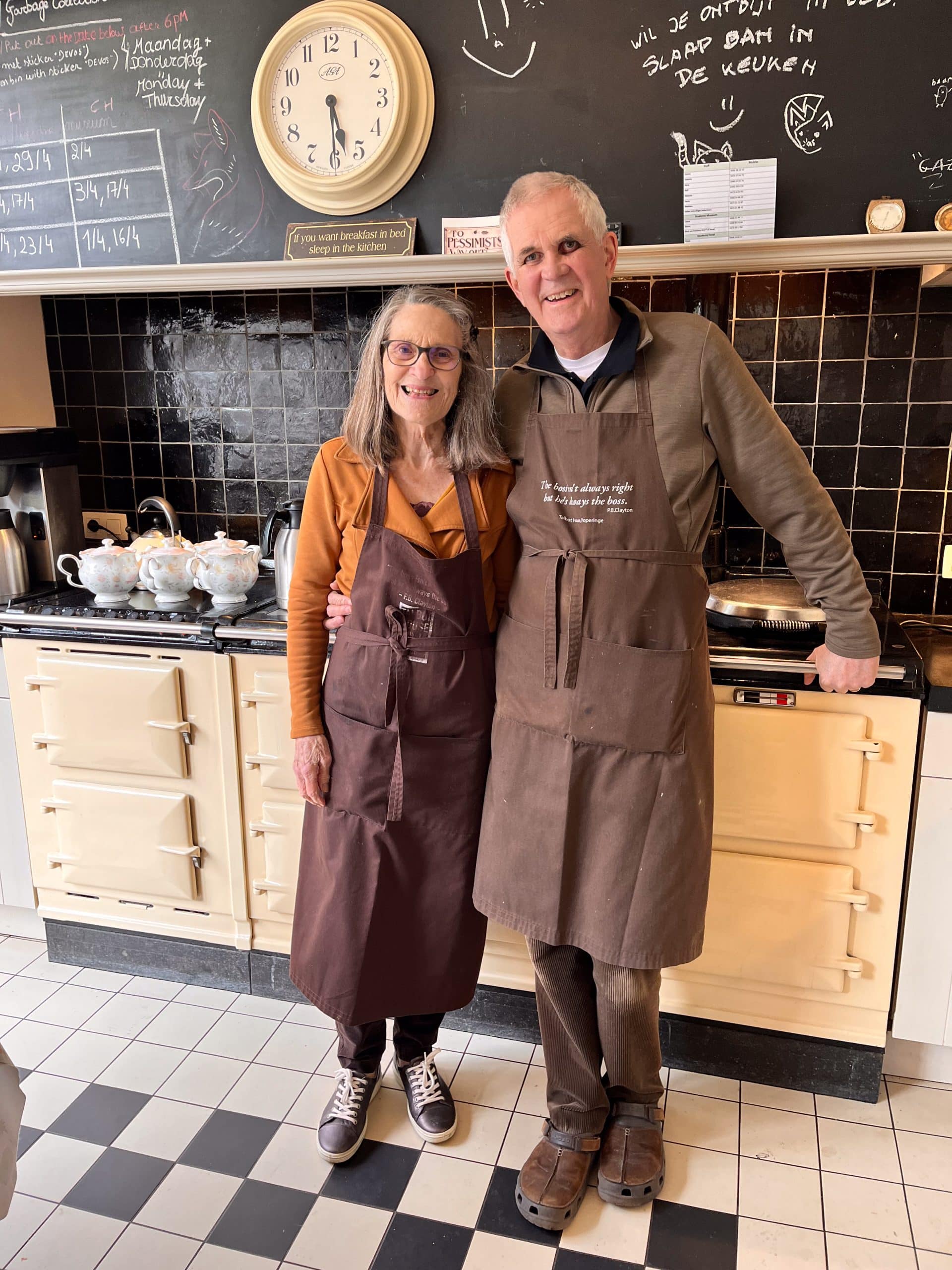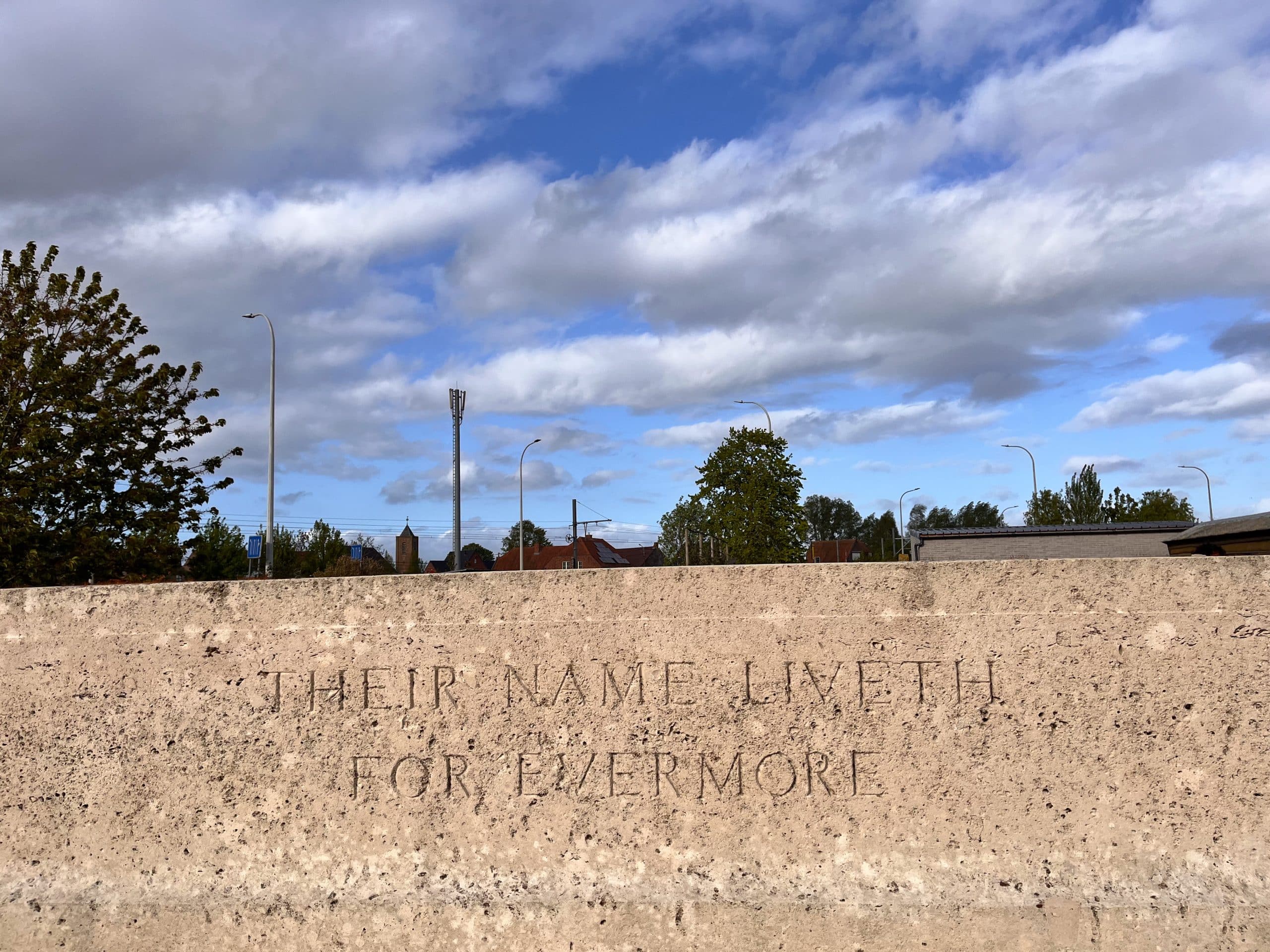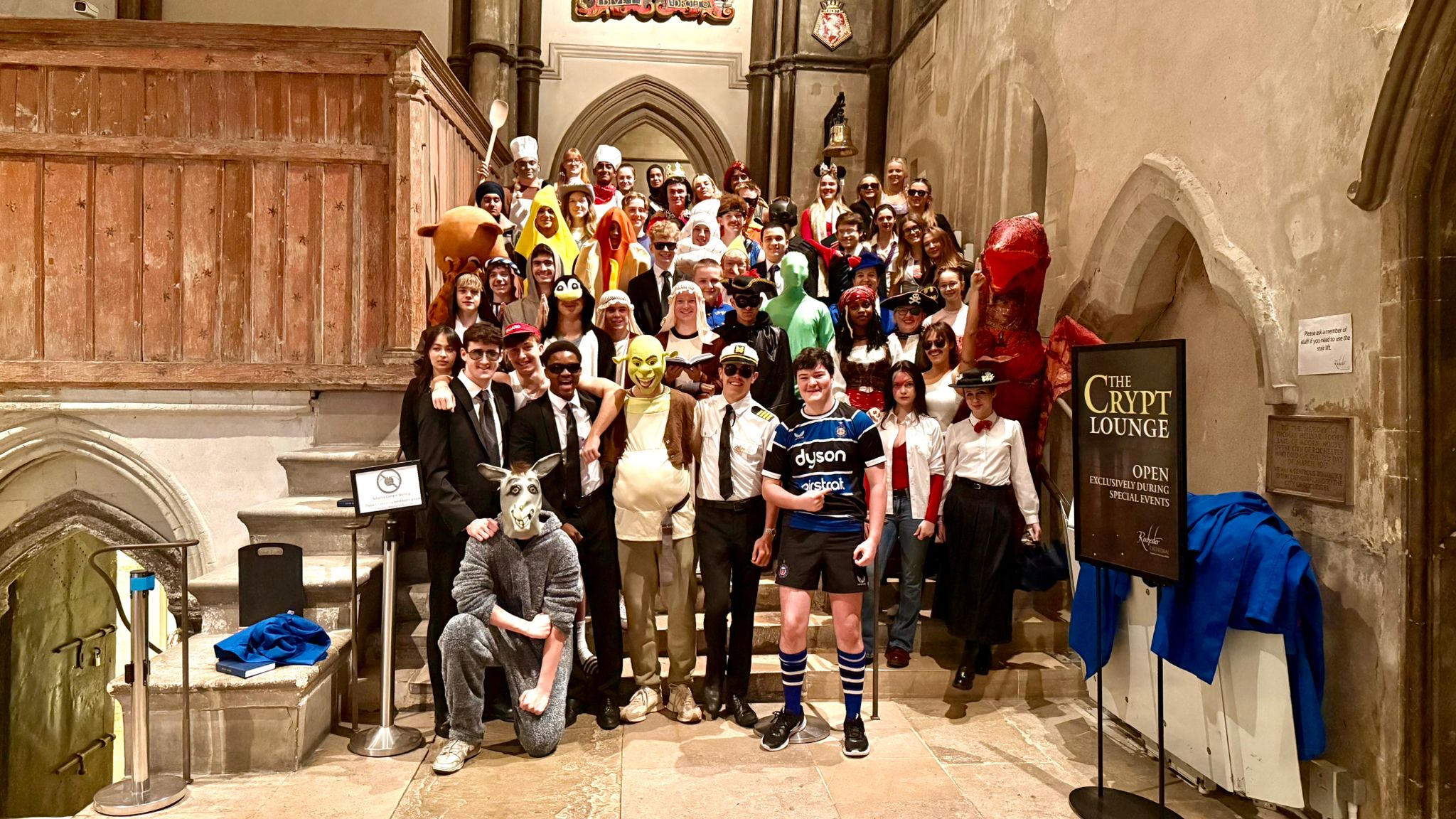
A quarter of the men killed in the First World War died in the Ypres Salient. Whereas in the Somme, the war’s only comparable British theatre, fighting raged for four and a half months, here the fighting continued for over four and a half years. “A more sacred place for the British race does not exist in the world”, said Churchill in 1919. This, indeed, is the British Verdun, the only major town in Belgium never to fall into German hands, a bastion resolutely defending the German route to the Channel ports of Calais and Boulogne.
Parties from King’s School have been visiting Ypres since 1992 and, on this occasion, over sixty pupils from Year 8 and the Lower Fifth, the latter deprived of the opportunity two years ago because of Covid restrictions, made their way to the front. Stopping briefly at Lijssenthoek, we paid tribute at the grave of Lieutenant Oscar Maginness, one of the 164 Old Roffensians who served in the tragically misnamed “Great War”, and one of many who fell in the flooded, flat fields of Flanders.
Walking on the recreated duckboards of the trenches of Bayernwald in the grey, light rain of the dull April skies it was not difficult to envisage the “crumps and lice” experienced by the “simple soldier boy” in the winter trenches of Sassoon’s poem.
From here we journeyed to the Menin Road, close to Hellfire Corner, where Mr Charles and Mr Morgan laid a wreath at the tomb of Captain A E C T Dooner, OR, whose death in the early weeks of the conflict is also commemorated in the Lady Chapel of Rochester Cathedral.
Tyne Cot, the Commonwealth War Graves’ largest necropolis, honours the fallen from the Third Battle of Ypres, commonly known as Passchendaele, and sits a short distance from the German cemetery of Langemark, although in death the victors and vanquished have no divide and the brooding expressionist sculptures of mourners in the German “Friedhof” might be similarly bowed at the grave of the volunteers and conscripts from Britain and its far-flung empire killed by shell, bullet and gas.
Talbot House, an Everyman Club, welcoming soldiers of all ranks provided our group with some respite, just as offered by the Reverend “Tubby” Clayton to men from the surrounding trenches in the days when the fighting was at its fiercest. In the Upper Room, a refashioned loft used for drying hops, we held two services of reflection on the very site where men from these shores took communion, sometimes for the first time and sometimes for the last time before the rude, rough carpenter’s bench which served as an altar, perhaps listening to the sounds from the “squeeze box”, a harmonium smuggled to the front by a soldier returning from leave. Remarkably, on the day of our visit we were served tea by Mr and Mrs Madden, guest wardens at Toc H. Ken was a pupil at King’s before becoming a teacher of Classics, while Libby, his wife, is the grand-daughter of John Storrs, Headmaster of King’s School and Dean of Rochester during the years of the First World War.
From here we made our way to the grave of Captain Noel Chavasse, winner of two Victoria Crosses, the latter posthumously, and whose own brother was to become Bishop of Rochester.
Supper in Ypres gave us a chance to view the re-built Cloth Hall, part of a town destroyed by shells raining down from artillery surrounding the medieval textile capital, a town which Churchill, amongst others wanted preserved as a ruined memorial, like the French villages détruits. The Last Post signalled at the Menin Gate, provided the prequel to a final act of remembrance at the grave of Valentine Strudwick, who “grinned at life in simple joy” before enlisting to defend “Brave Belgium”, only to fall at 15 years, the same age as many of the Lower Fifth in our party. As the light faded at Strudwick’s tomb, Sassoon’s invocation “sneak home and pray you’ll never know the hell where youth and laughter go” had an added urgency. The silence was a loud entreaty, bringing to an end a poignant day.
Paul Medhurst, Whole School Director of Teaching and Learning
Gallery below includes photos of our generous hosts who served us tea at Talbot House, OR Ken Madden and his wife Libby (grand-daughter of John Storrs who House Storrs is named after). As well as Old Roffensian graves of:
Captain A.E.C.T. Dooner, Royal Welch Fusiliers
Lieutenant O.G. Maginness, Royal Army Medical Corps
Related Posts
All the girls who took part in the House Swimming Gala had a fantastic time representing their House, culminating in some impressive results and a memorable display of effort and sportsmanship. It was rewarding to see the progress of all competitors, from our 'lifers' who started swimming in Year 1 to the newcomers assessed just [...]
Lower Sixth pupils enjoyed extracting DNA from Kiwi Fruit in biology this week. The practical session offered a valuable opportunity to engage directly with molecular biology. Using simple laboratory techniques, the pupils were able to break down the fruit's cell walls to access and isolate its genetic material. The white substance visible at the [...]
The annual Children in Need fancy dress day saw the Sixth Former Centre full of weird and wonderful characters with both staff and pupils participating. Dominating the scene was a magnificent giant pterodactyl with the pupil valiantly battling to manoeuvre through school corridors and the cobbles of Rochester. A spirited contingent of cowboys and [...]





